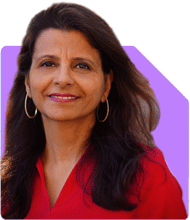Ramalingam Kalirajan |10071 Answers |Ask -Follow
Mutual Funds, Financial Planning Expert - Answered on Jun 18, 2024
He has an MBA in finance from the University of Madras and is a certified financial planner.
He is the director and chief financial planner at Holistic Investment, a Chennai-based firm that offers financial planning and wealth management advice.... more

Hi what shall I do with below investments in mutual funds through SIP for next 20 years 1. SBI PSU direct plan growth 2. Aditya Birla Sun life PSU equity fund direct growth 3. ICICI prudential infrastructure direct growth I am looking for next 20 years in these mutual funds
SBI PSU Direct Plan Growth
Aditya Birla Sun Life PSU Equity Fund Direct Growth
ICICI Prudential Infrastructure Direct Growth
Understanding Sector-Specific Funds
Sector-specific funds, such as PSU and infrastructure-focused funds, invest predominantly in companies within a particular sector. These funds can offer substantial returns but come with higher risk due to their concentrated exposure.
Public Sector Undertaking (PSU) Funds
PSU funds invest in companies owned or controlled by the government. These companies often operate in sectors like banking, oil and gas, and utilities. PSU stocks can be attractive for their stability and dividends but can be influenced by government policies and economic conditions.
Infrastructure Funds
Infrastructure funds invest in companies involved in infrastructure development, such as construction, transportation, and utilities. These sectors are crucial for economic growth and can benefit from increased government spending on infrastructure projects. However, they are also sensitive to regulatory changes and economic cycles.
Evaluating Your Current Investments
1. SBI PSU Direct Plan Growth
Strengths:
Stability and Government Backing: PSU companies typically have strong backing from the government, providing a sense of stability.
Dividend Potential: Many PSU companies offer attractive dividend yields, providing a source of regular income.
Long-term Growth Potential: With a focus on essential services and industries, PSU companies can offer steady long-term growth.
Challenges:
Policy Sensitivity: PSU stocks can be significantly affected by changes in government policy, impacting their performance.
Underperformance in Certain Phases: Historically, PSU stocks may underperform during periods when private sector growth outpaces government-driven initiatives.
2. Aditya Birla Sun Life PSU Equity Fund Direct Growth
Strengths:
Concentrated Investment in Established Firms: This fund focuses on established government-run enterprises with a long operational history.
Lower Volatility: PSU funds can be less volatile compared to private sector-focused funds, especially during market downturns.
Sector Diversification: PSUs often span multiple sectors like energy, finance, and utilities, providing sectoral diversification.
Challenges:
Limited Growth in Certain Sectors: Some PSUs may have limited growth potential compared to more dynamic private companies.
Government Interference: Being government-controlled, PSUs might face bureaucratic challenges and slower decision-making processes.
3. ICICI Prudential Infrastructure Direct Growth
Strengths:
Focus on Economic Growth: Infrastructure funds benefit from increased spending on infrastructure projects, which are crucial for economic development.
Potential for High Returns: These funds can offer substantial returns, especially during periods of economic expansion and increased infrastructure spending.
Diversified Sector Exposure: Infrastructure funds often invest in a variety of sectors such as transportation, energy, and utilities.
Challenges:
Economic Sensitivity: Performance can be closely tied to the economic cycle, with significant risks during economic downturns.
Regulatory Risks: Changes in government policy and regulations can impact the profitability and growth prospects of infrastructure companies.
Strategic Recommendations for the Next 20 Years
Given your 20-year investment horizon, it’s important to balance sector-specific exposure with a diversified and adaptable investment strategy. Here’s how you can navigate your investments in these funds over the long term:
1. Maintain Sector-Specific Investments with Regular Review
Periodic Assessment of Sector Performance:
Regularly review the performance and outlook of the PSU and infrastructure sectors.
Assess how government policies, economic conditions, and market trends impact these sectors.
Rebalance Based on Market Cycles:
During periods of strong government investment and economic growth, your PSU and infrastructure funds may perform well.
Rebalance your portfolio if these sectors underperform relative to the broader market or your expectations.
2. Diversify Beyond Sector-Specific Funds
Introduce Broad-Based Equity Funds:
Complement your sector-specific funds with broad-based equity funds covering various market segments.
This diversification can mitigate the risk associated with concentration in PSU and infrastructure sectors.
Consider International Exposure:
Explore funds with international exposure to diversify geographically and reduce reliance on domestic economic conditions.
International funds can provide access to global growth opportunities and reduce sector-specific risks.
3. Adapt to Changing Market Conditions
Flexibility in Allocation:
Be open to adjusting your investment allocation based on changing market conditions and economic trends.
This flexibility can optimize returns and reduce risk over your 20-year investment period.
Monitor Economic Indicators:
Keep an eye on economic indicators that affect PSU and infrastructure sectors, such as government budgets and infrastructure spending.
Adjust your investment strategy to align with economic forecasts and policy changes.
4. Leverage Professional Guidance
Consult with a Certified Financial Planner (CFP):
Engage a CFP to provide personalized advice and ensure your investments align with your long-term goals.
A CFP can offer insights into market trends and help optimize your portfolio for sustained growth.
Utilize Mutual Fund Distributors (MFDs):
Work with MFDs who have CFP credentials to gain access to a range of funds and professional fund management expertise.
This approach can enhance your investment strategy and provide tailored recommendations.
5. Emphasize Long-Term Growth Potential
Focus on Compounding and Patience:
Given your 20-year horizon, leverage the power of compounding by staying invested and avoiding frequent withdrawals.
Patience is key to realizing the full growth potential of your investments.
Look for Emerging Opportunities:
Stay informed about new growth opportunities within PSU and infrastructure sectors.
Emerging technologies and infrastructure developments can offer substantial returns over the long term.
6. Manage Risk and Volatility
Implement Risk Management Strategies:
Use risk management strategies like asset allocation and diversification to balance risk in your portfolio.
Consider adding debt funds or bonds to provide stability and reduce overall portfolio volatility.
Regularly Reevaluate Risk Tolerance:
Periodically reassess your risk tolerance to ensure your investment strategy aligns with your financial situation and goals.
Adjust your portfolio as needed to reflect changes in your risk appetite over time.
7. Keep Track of Fund Performance and Changes
Monitor Fund Performance:
Regularly track the performance of your PSU and infrastructure funds against benchmarks and market indices.
Evaluate the fund managers’ strategies and performance relative to their peers.
Be Aware of Fund Management Changes:
Stay informed about any changes in the management of your funds, as new managers may bring different investment approaches.
Assess how these changes impact the fund's strategy and performance.
8. Stay Committed to Your Investment Plan
Consistency and Discipline:
Maintain a disciplined approach to investing by consistently contributing to your SIPs.
Avoid making impulsive decisions based on short-term market movements.
Review and Adjust Periodically:
Conduct regular reviews of your investment strategy and make adjustments based on your financial goals and market conditions.
Ensure that your portfolio remains aligned with your long-term objectives.
Final Insights
Investing in sector-specific funds like PSU and infrastructure requires a strategic approach, particularly over a long-term horizon of 20 years. Your current investments in SBI PSU Direct Plan Growth, Aditya Birla Sun Life PSU Equity Fund Direct Growth, and ICICI Prudential Infrastructure Direct Growth position you to benefit from government-backed enterprises and infrastructure development.
To maximize returns and manage risks, consider diversifying your portfolio with broad-based and international equity funds. This diversification reduces reliance on sector-specific performance and provides exposure to broader market growth.
Regularly review your investments, monitor economic indicators, and stay flexible in your allocation strategy. Engage with certified professionals for tailored advice and leverage their expertise to optimize your investment plan.
Remember, patience and discipline are key to long-term investing. By staying committed to your strategy and making informed adjustments, you can achieve your financial goals and build a secure future.
Best Regards,
K. Ramalingam, MBA, CFP,
Chief Financial Planner,
www.holisticinvestment.in
You may like to see similar questions and answers below
Omkeshwar Singh | Answer |Ask -Follow
Head, Rank MF - Answered on Sep 08, 2021
Omkeshwar Singh | Answer |Ask -Follow
Head, Rank MF - Answered on Dec 16, 2020
Ramalingam Kalirajan |10071 Answers |Ask -Follow
Mutual Funds, Financial Planning Expert - Answered on Apr 10, 2024
Ramalingam Kalirajan |10071 Answers |Ask -Follow
Mutual Funds, Financial Planning Expert - Answered on Apr 12, 2024
Ramalingam Kalirajan |10071 Answers |Ask -Follow
Mutual Funds, Financial Planning Expert - Answered on Jul 14, 2024
Komal Jethmalani |410 Answers |Ask -Follow
Dietician, Diabetes Expert - Answered on Aug 02, 2025
Prof Suvasish Mukhopadhyay |2744 Answers |Ask -Follow
Career Counsellor - Answered on Aug 02, 2025
Prof Suvasish Mukhopadhyay |2744 Answers |Ask -Follow
Career Counsellor - Answered on Aug 02, 2025
Dr Nagarajan J S K |2129 Answers |Ask -Follow
NEET, Medical, Pharmacy Careers - Answered on Aug 01, 2025
Dr Nagarajan J S K |2129 Answers |Ask -Follow
NEET, Medical, Pharmacy Careers - Answered on Aug 01, 2025
Dr Nagarajan J S K |2129 Answers |Ask -Follow
NEET, Medical, Pharmacy Careers - Answered on Aug 01, 2025
Radheshyam Zanwar |6064 Answers |Ask -Follow
MHT-CET, IIT-JEE, NEET-UG Expert - Answered on Aug 01, 2025
Dr Nagarajan J S K |2129 Answers |Ask -Follow
NEET, Medical, Pharmacy Careers - Answered on Aug 01, 2025
Ramalingam Kalirajan |10071 Answers |Ask -Follow
Mutual Funds, Financial Planning Expert - Answered on Aug 01, 2025
Ramalingam Kalirajan |10071 Answers |Ask -Follow
Mutual Funds, Financial Planning Expert - Answered on Aug 01, 2025

























